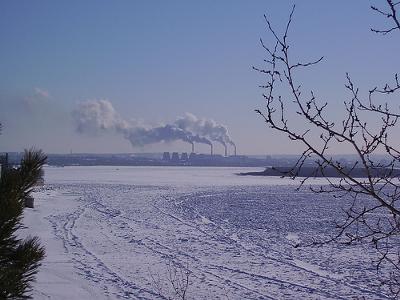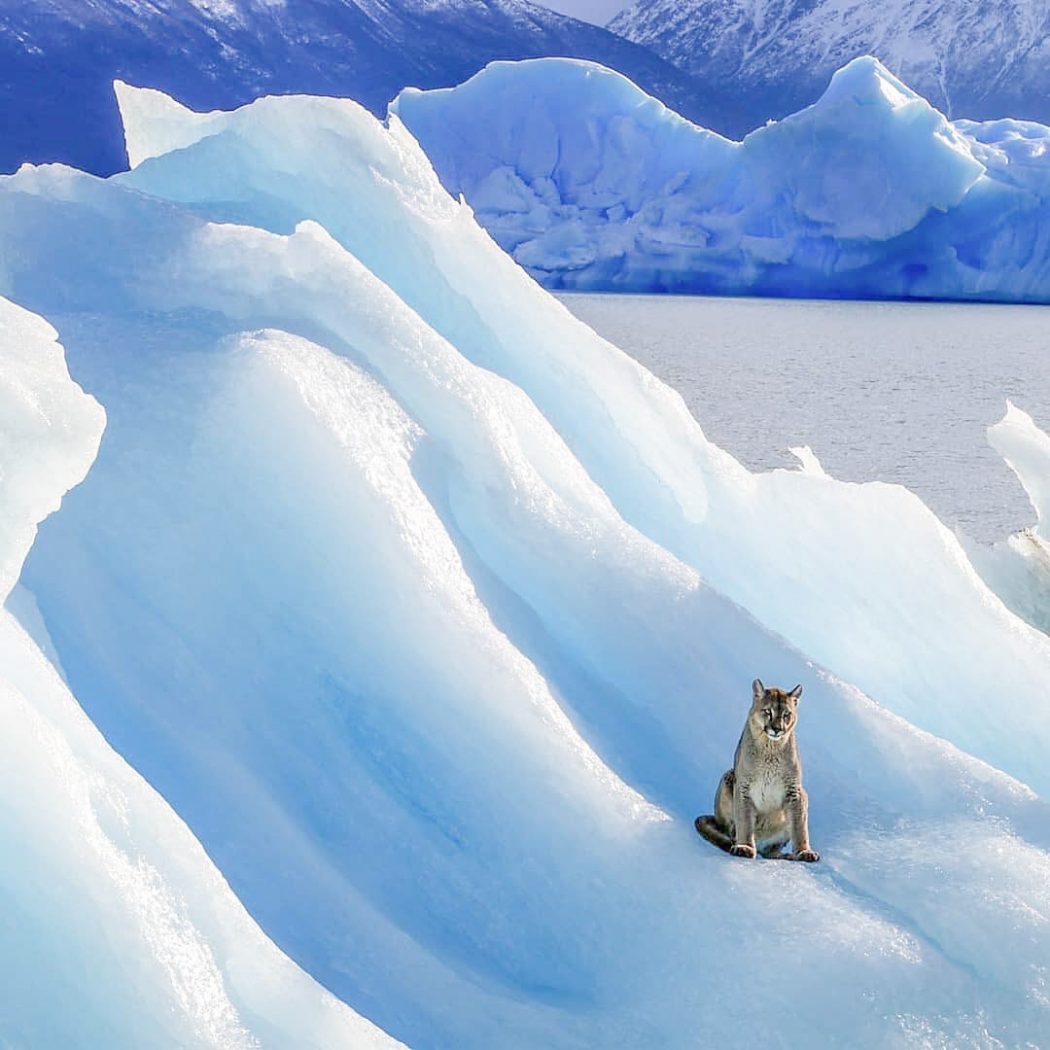I am referring to wild cat species and secondly there is no cat species which only lives in the snow all the time. I guess that is common sense but the wild cat species listed, of which there are 12, spend at least part of their time in a snowy landscape more so than is typical of other species. Some species never see snow.
The obvious contender for a cat living in snow is the perfectly named snow leopard. This beautiful wild cat is found only in the high mountain regions of central Asia. They are rock specialists because they have to negotiate rugged areas where the terrain is broken by cliffs, ravines and ridges. They can live as high as almost 6000 m above sea level where tracks have been recorded. In north-western Pakistan and other places that are within the snow leopard’s range deep winter snow forces the cat to lower elevations because their prey, wild ungulates, dissent to elevations of 1219 m or lower.

There is speculation that the cat is a better hunter in rain and snow. Naturalists have reported that the snow leopard tends to hunt soon after a heavy snowfall. Fresh snow possibly helps the cat to move silently so that it can more easily stalk prey on rocky slopes.
Another excellent contender for a cat that lives in the snow is the Canada lynx. The distribution of this beautiful cat is throughout Canada and Alaska in the USA and northern portions of United States. It’s distribution mirrors that of the snowshoe hare. They use fallen trees and tipped up roots in forests as shelters from very cold weather and deep snows. It is believed that they avoid conflicts with bobcats and coyotes by inhabiting landscapes at higher elevations above sea level with greater depths of snow.

Assessing the Canada lynx’s behaviour has been conducted by tracking them in snow. They are adapted to snow with their snowshoe-like feet. The fur covering their paws is long and dense. Their paws can be spread widely providing additional support in soft snow. Their paws can support twice the weight of those of the Bobcat.

The Andean mountain cat lives at elevations above sea level at about 3000 m to around 5000 m. The climate in their range of operation is very cold and most of the moisture falls as snow during the summer. There is little rain. The vegetation is hardy. The pictures that I have seen of this cat species have shown them on rocky, arid landscapes dotted with clumps of snow.

The Pampas cat has been recorded as living at altitudes as high as 4800 m above sea level. In these areas there must be snow sometimes so this cat could be described as a species that lives in snow from time to time. They live in South America in a great variety of habitats.

Pallas’s cat or the Manul is built like a cat who lives in snow with an incredibly long and luxuriant coat. They are found in that mysterious area directly north of India including Mongolia and to the west as far as the Caspian Sea and to the east into China. They are found at elevations of 3000-4000 m but most of the records are from cats from lower elevations. They encounter a wide range of temperatures in their habitat. In Central Asia the winter temperature is normally -50°C and snowfall is light and uneven. They appear to be unable to negotiate deep blue snow and rarely live in areas where the maximum mean 10-day snow-covered depth exceeds 10 cm.
In the winter they become fat and are less mobile. As a result they are unable to run through snow which leaves them more vulnerable to hunters. They spend the day in rock crevices, caves or marmot burrows emerging in the late afternoon to hunt.

I have to add that the Bengal tiger has migrated up from the usual places you would see them in India to Bhutan in the north where there is snow. It is hard to see them walking along tracks in snowfall but they are safer there from human persecution. It indicates their adaptability as is the case, incidentally, for most of the wild cat species. You have to add in the Siberian tiger too, living as it does in a very cold landscape in the east of Russia namely Siberia.


The Chinese desert cat, a cat of the wildcat species, has been recorded living at elevations of 2800-4100 m. It is believed that their habitat is probably steppe and mountainous terrain with forests. The same sort of forest in which lives panda and the golden monkey. They live in the mountains so the name that they are given is a misnomer. They must encounter snow and therefore I have placed them in this group.

The European wildcat and the Scottish wildcat both live in landscapes where there must be snow from time to time and with which they cope admirably. In Scotland they live in forested areas with woodlands, bogs and open heather moorlands.
However, they are not well suited to moving through loose, deep snow because of their relatively short legs. In general, they will only accept areas where mean winter snowfall does not exceed 10 to 20 cm.

The American bobcat, ubiquitous across the USA, also encounters snow and I have mentioned above when discussing the Canada lynx.

The Puma a.k.a. mountain lion must encounter snow from time to time. They have the widest range of any cat in the Americas and you will find them from sea level up to elevations of 5800 m in southern Peru, for instance. They are adapted for a wide range of habitats and are incredibly athletic. There probably the best jumpers of all the wild cat species. There are some great pictures of a puma on an iceberg in Patagonia, Argentina. I guess pumas (mountain lions) can and do sometimes live in the snow and ice.

If I have missed a cat from this list please tell me in a comment and I’ll respond positively.

